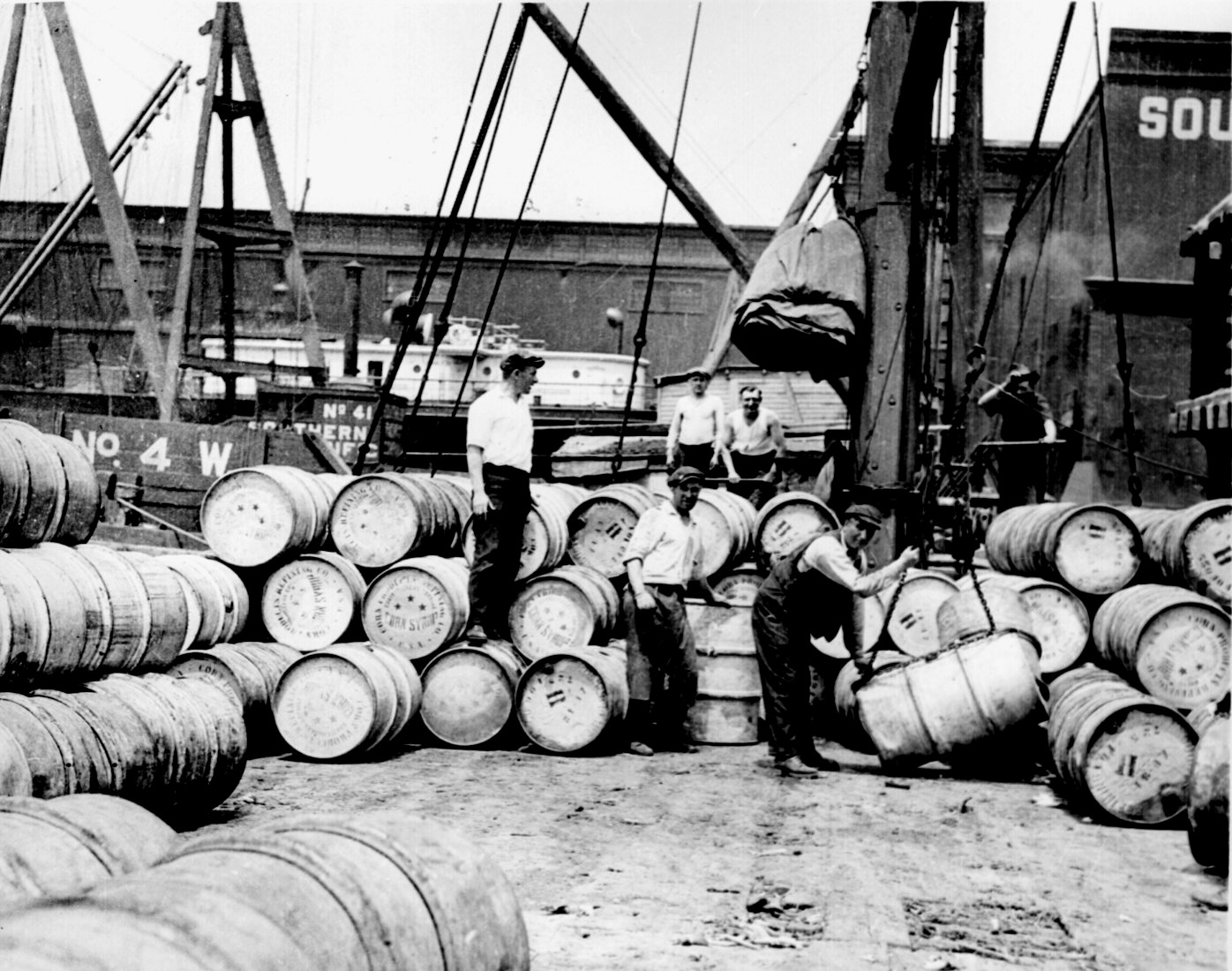Today while reading some information related to my job, I learned of a new resource that explains the environmental hazards of working/living near a major water port. That prompted me to do a blog post about my great-grandfather, Lewis Robinson. We don’t know much about Lewis, as he died when my grandfather was just three years old. He is described as being short (and my grandfather and many of his brothers were tall, so where did the height come from?) In fact, his WWI Draft Enlistment Card has his height as 5 feet, 5 inches tall – cool to see this fact confirmed by documentation! There is a whole story around his middle name being “Christopher Columbus,” but that is a post for another day. What I do want to post about right now is his job, apparently, he was a longshoreman for at least the last 8 years of his life.
Both the 1920 census and his death certificate from 1928 indicate that this was his occupation. As I know absolutely nothing about what it means to be a longshoreman, this is my opportunity to learn and a chance to get some of this in writing.
What is a longshoreman? According to a Wikipedia entry, a longshoreman is generally responsible for loading and unloading ships. Longshoremen should know the proper techniques for lifting and loading equipment and be physically strong. It seems that in the early days, most cargo was tied down with rope tied with Stevedore knots. This picture, from 1912, shows some longshoreman on the docks of the Hudson River in New York (very likely where Lewis worked given that he lived in Manhattan.)

His employer: Lewis worked for the Panama Lines, and while I plan to do more extensive research into the Panama Lines, I have done some quick looking online. Panama Lines was a steamship line operated by Panama Railroad Company. There is a 1991 article from the Journal of the Steamship Historical Society that talks about the history of the Panama Railroad Company and the steamships they operated. The Line was established as a connection between ports in US and the Panama Canal. I am interested in learning about the ships that Lewis may have loaded/unloaded and thus far, it seems that ones in operation while he was working may have included the ADVANCE, the PANAMA, the COLON, the CRISTOBAL, the ANCON, the ALLIANCA, LAKE FLATTERY, LAKE FANQUIER, the BUENVENTURA, and the GUAYAQUIL.
This image from one of the Lines’ 1949 brochures’ aims to showcase the experience.
 The ship in the brochure appears to be the Cristobal, as best as I can tell from other pictures of the ship on that same website. These two flags were also used by the company.
The ship in the brochure appears to be the Cristobal, as best as I can tell from other pictures of the ship on that same website. These two flags were also used by the company.

How cool! I would love to find some books that can provide me with even more details about the longshoreman work habits and the history of the Panama Lines. Given Lewis’ work on the docks, I find it cool that his sons (at least 3 of them) would all go on to serve in the US Navy.
Lewis “Christopher Columbus” Robinson
